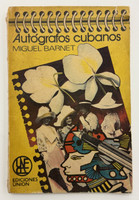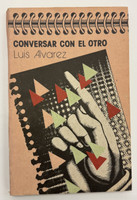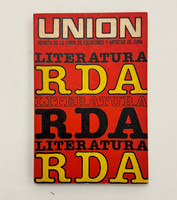- Travel
-
Exhibits
- La Portada Cubana
- Immortal Cuba: Artists Take on Their Heroes
- Seattle Poster Exhibit
- Sandra Dooley & Alejandrina Cué
- The Art of Wayacón
- Cuban Folk Art
- Cuba In Black And White
- 25 Years of Cuban Art Space
- Summer Folk Art Expo
- ¡SPRING AWAKENING FROM CUBA!
- Celebrating The Art Of Cuban Women
- Celebrating Paper, Affordable Art from Cuba
- Art of the Revolution
- Outsider Art
- Lost and Found
- En la lucha: Celebrating Cuban Women and Their Art
- Cuban Art Stash
- 100 Fires: 5 Cienfuegos Artists' Work on Paper
- Waya + Monte! Magic Realism in Cienfuegos
- Viva Cuba Viva! Poster Show
- Cultivando Sueños
- Black Lives Matter in Cuba Jan 9-March 27
- Leandro Soto: Crónicas visuales
- Cuban Canvas
-
Archive
- Global Reflection 2018: Spirit and Community
- Exhibit in the cloud: Contemporary Works on Paper
- MADE IN CUBA! MINNEAPOLIS EXHIBIT
- Cuban Posters and Photography from CCS collection
- AUTUMN SALE! Sept/Oct 2017
- SPRING ARTS AND CRAFT SALE
- Vuelo Directo/Non Stop: Alberto & Alejandro Lescay
- The Many Faces of Fidel
- Somos
- Made in Cuba!
- The US empire in Cuban graphics
- Made in Cuba/Seattle exhibit
- Entre Nos
- Looking Back
- Cuban Art Space
- Membership/Donate
- About Us
- Cuba News
-
This monograph represents a significant contribution to revolutionary film theory from one of Cuba's most important filmmakers. Tomás Gutiérrez Alea's Dialéctica del Espectador (Dialectics of the Spectator) examines the complex relationship between cinema and audience from a Marxist perspective, confronting the interests of the bourgeoisie with those of the proletariat and analyzing the collision between consumer society and revolutionary society.
Héctor Villaverde's cover design employs bold, condensed typography in cream against a vibrant magenta background, creating maximum visual impact through minimal means. The stacked letterforms of "DIALÉCTICA DEL ESPECTADOR" feature subtle linear details within each letter, adding textural interest to the otherwise flat color field. This stark modernist approach reflects both the theoretical rigor of the content and the revolutionary aesthetic of Cuban graphic design in the 1980s.
Gutiérrez Alea (1928-1996) began his film career in 1947, studied law in 1951, then pursued cinematography at Rome's Centro Sperimentale di Cinematografia. He co-founded the influential Nuestro Tiempo cultural group and in 1957 collaborated with Julio García Espinosa on El mégano. As a founding member of ICAIC (Instituto Cubano del Arte e Industria Cinematográficos), he directed landmark films including Historias de la Revolución, Las 12 sillas, La muerte de un burócrata, Memorias del subdesarrollo (his masterpiece about a bourgeois intellectual during the revolution), La última cena, and Los sobrevivientes.
This theoretical work seeks truth in cinema, opposing the ideological manipulations employed by both bourgeois ideologues and leftist liberals. Published as number 13 in UNIÓN's Cuadernos series and edited by Miguel Barnet, the essay explores concepts like popular cinema versus "popular" cinema, spectacle versus cinema of ideas, identification and distancing (engaging Aristotle and Brecht), and alienation and de-alienation (engaging Eisenstein and Brecht). The monograph includes an appendix of memories from Memorias and bibliographic references, offering both theoretical framework and practical insights from one of Latin American cinema's most sophisticated artist-intellectuals.
-
-
Discover More at the Center for Cuban Studies







